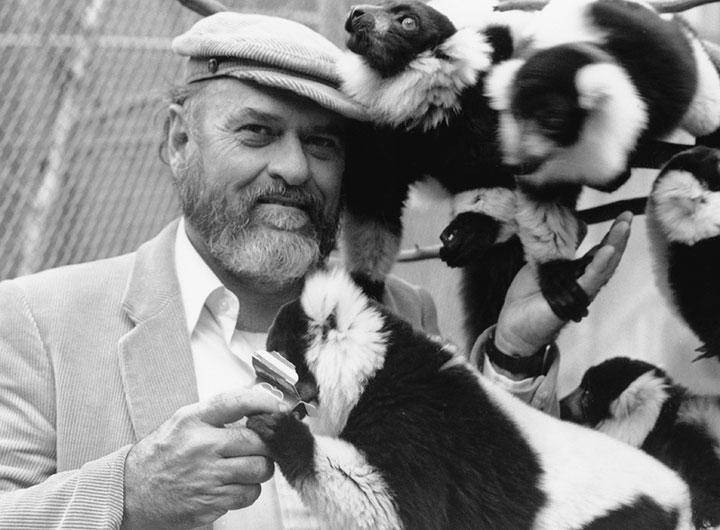JULY 14, 1930–MARCH 6, 2016
It was 1967 when Elwyn Simons *56 first unveiled to the world a skull of Aegyptopithecus, the extinct common ancestor of humans, apes, and monkeys that became his signature discovery. But his technique wouldn’t have looked out of place at a Steve Jobs keynote address. “He came with it in his jacket pocket,” says Philip Gingerich ’68, who as a Princeton senior traveled to the conference where Simons made the big reveal. “To the great surprise of everybody, he pulled it out and started to talk about it, and then was swept away by news people afterward.”
That moment was emblematic of Simons, a spellbinding storyteller who is hailed as the father of modern primate paleontology. His half-century of work with living and extinct primates shed unprecedented light on the early part of humans’ evolutionary story. He was a generous mentor to countless students, among them Gingerich, who is now a professor emeritus at the University of Michigan.
Expeditions to Wyoming under eminent Princeton paleontologist Glenn Lowell Jepsen ’27 *30 set Simons’ globetrotting course. Simons hunted fossils in Egypt, Madagascar, and elsewhere. He endured scorpion bites, political unrest, and cave mud so thick it would steal away boots. The moments of beauty were worth it. “You’d be camping out with him in the evening, and he would be gazing out at the stars,” says University of Massachusetts professor emeritus Laurie Godfrey, an anthropologist who discovered a new genus of extinct lemur with Simons. “He would be talking about the constellations, or he’d be reciting Old English poetry.”
Or he’d be holding court with an epic story. A guest lecture at Michigan in the 1970s spilled over into the wee hours at Gingerich’s home, with tales of famed archaeologist Louis Leakey. “We went the entire evening sitting around drinking scotch, or in Elwyn’s case, bourbon,” recalls paleontologist Gregg Gunnell, an undergraduate at the time.
Storytelling wasn’t his only gift. “Elwyn had fossil luck — and fossil luck is something that you have or you don’t have,” says Alan Mann, Princeton anthropology professor emeritus. In his career at Yale, and later as director of the Duke Lemur Center, Simons amassed a world-class collection of fossils, some up to 50 million years old. He also started a breeding program that added wild Madagascar lemurs to the Duke center’s family.
When Simons retired from Duke in 2011, Gunnell succeeded him in managing Duke’s fossil collection. “I wouldn’t say I replaced him,” Gunnell says. “I took over his job. Elwyn was definitely a larger-than-life character in many ways.”
“He was a true scholar who established ideas and hypotheses that others could test, and whether they were later accepted, refined, or rejected, that’s what science is,” adds Mann. “In that sense, Princeton produced a great scientist. He is an alum that we can all be extremely proud of.”
Carmen Drahl *07 is a freelance contributor to Forbes and Scientific American.


